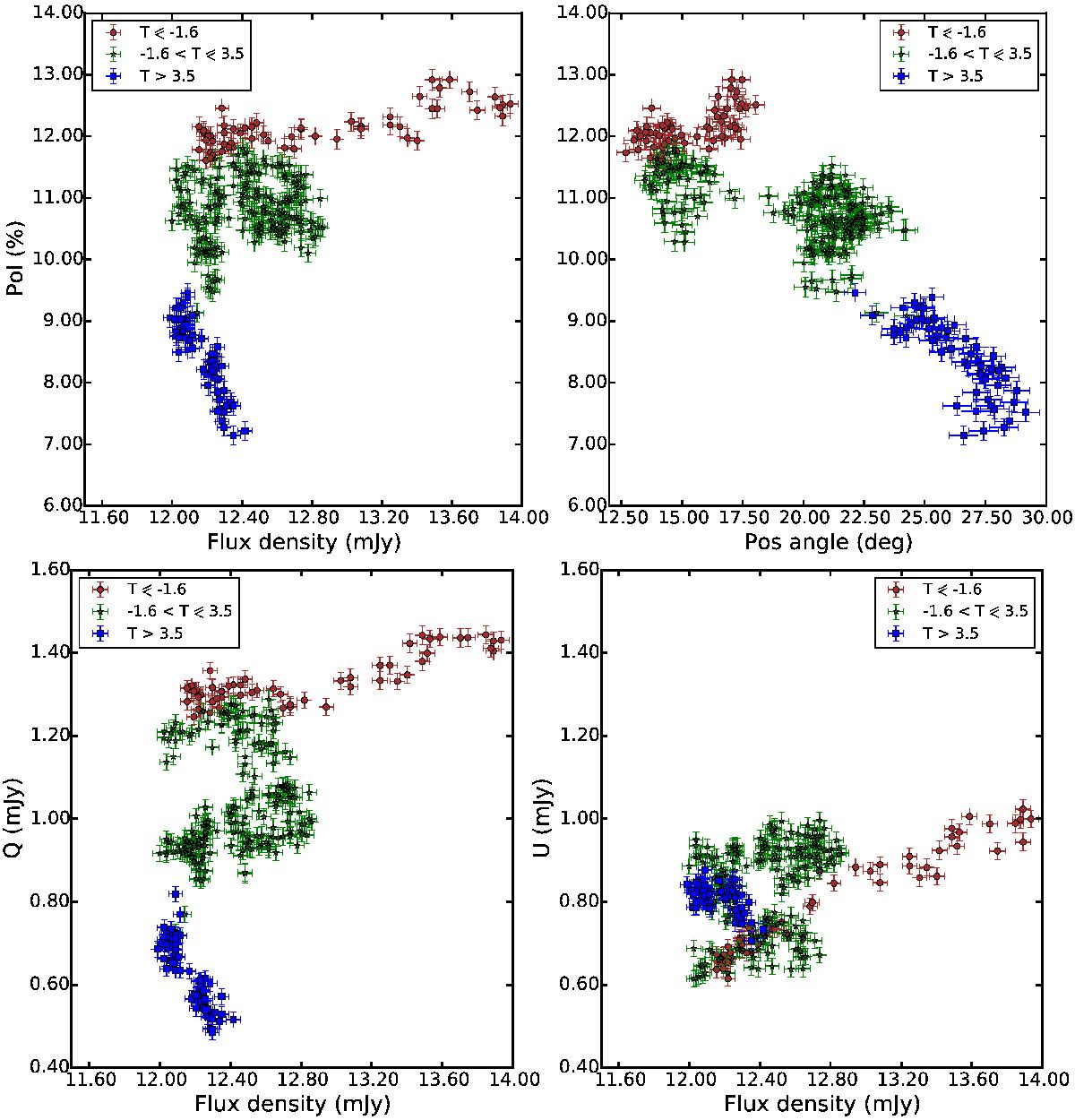Fig. 4

Upper left: BL Lac (host galaxy subtracted) flux density vs. linear polarization (host galaxy corrected, assuming unpolarized emission, e.g. Covino et al. 2003). At least three different regimes are singled out: at early time the flux changes rapidly with a slowly varying and rather high polarization (brown, circles), then an intermediate phase with chaotic flux and polarization variations (green, stars), and finally a sharp decrease in polarization with almost constant flux (blue, squares). Times in the legend are in hours (see Fig. 1). Upper right: BL Lac position angle vs. linear polarization. Same symbols of the upper left panel. The position angle tends to increase when the linear polarization decreases. The trend becomes very clear at the end of our observation. Bottom: flux density vs. Stokes parameters Q and U. Periods with approximately linear dependence between polarization and total flux are also singled out. Same symbols as in the upper left panel.
Current usage metrics show cumulative count of Article Views (full-text article views including HTML views, PDF and ePub downloads, according to the available data) and Abstracts Views on Vision4Press platform.
Data correspond to usage on the plateform after 2015. The current usage metrics is available 48-96 hours after online publication and is updated daily on week days.
Initial download of the metrics may take a while.




